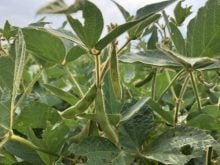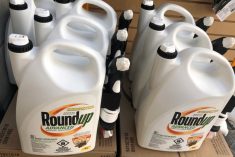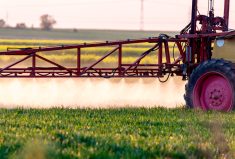Winnipeg | Reuters –– Western Canadian farmers are scrambling to find scarce canola seed as they reseed crops snuffed out by frost and insects.
Farmers in the region have until mid- to late June to plant ahead of insurance deadlines, but the later they sow canola, the higher the risk of damage later from heat or frost. Canada is the biggest producer and exporter of canola, used to produce vegetable oil.
The Prairies are prone to crop-damaging weather, from floods to drought, but severe frost last week arrived unusually late in spring.
Read Also

India slaps 30 per cent import duty on yellow peas
India has imposed a 30 per cent duty on yellow pea imports with a bill of lading date on or after Nov. 1, 2025.
“We’ve never seen an event like this,” said Rob Schultz, vice-president of sales and commercial operations for Bayer CropScience Canada, whose InVigor brand makes up about half of Western Canada’s canola seed sales. “We’re trying to go as fast as we can to manage the demand.”
Since last week’s frost, government crop insurance corporations in Manitoba and Saskatchewan have registered 1,500 and 900 crop insurance claims respectively, mostly for canola.
For the year, Manitoba has received 2,550 claims for re-seeding covering 800,000 acres, mostly since last week, said claims manager David Van Deynze at Manitoba Agricultural Services Corp.
David Hansen, CEO for Winnipeg-based Canterra Seeds, estimated farmers are re-sowing one million acres of canola across the Prairies.
Both Bayer and rival Monsanto said they moved quickly to transfer seed inventories to short areas such as southwestern Manitoba and eastern Saskatchewan, as well as treat additional seed.
“The supply isn’t really the issue, it’s more around getting it in the right place at the right time,” Schultz said.
Kyle Holman usually buys seed near his Crystal City, Man. farm. But this week he drove 90 minutes for most of the seed he will need to replant 560 canola acres.
He planted those acres during the first week of May, earlier than usual. That canola survived flea beetles and a cold blast around mid-May before frost destroyed it last weekend.
“It’s very frustrating and disappointing to lose it this late,” Holman said.
Others have it worse. Some of Holman’s neighbours are seeding canola for the third time this spring.
Typically, about 0.4 per cent of the canola seed Monsanto sells for spring seeding is re-seeded, but this year that percentage may be three per cent, said Neil Arbuckle, Monsanto Canada’s national sales and strategy lead.
“We’ve done our best to get product into the hands of farmers, who are quite antsy to get product into the ground,” he said.
— Rod Nickel is a Reuters correspondent covering the agriculture and mining sectors from Winnipeg.











